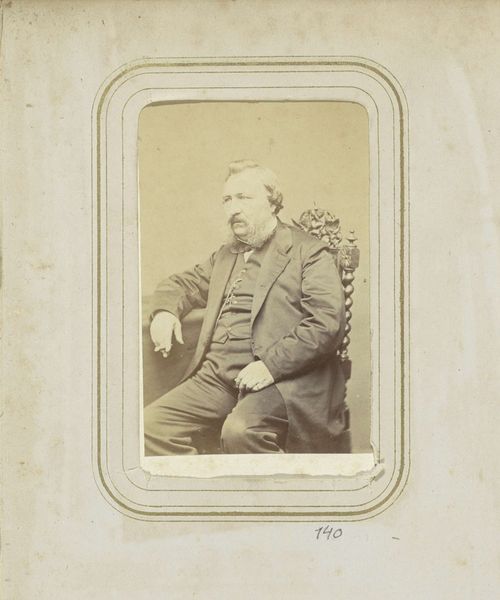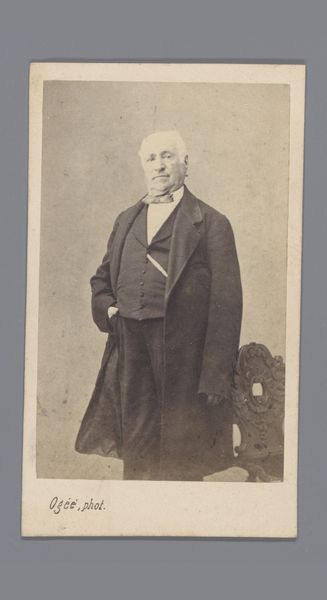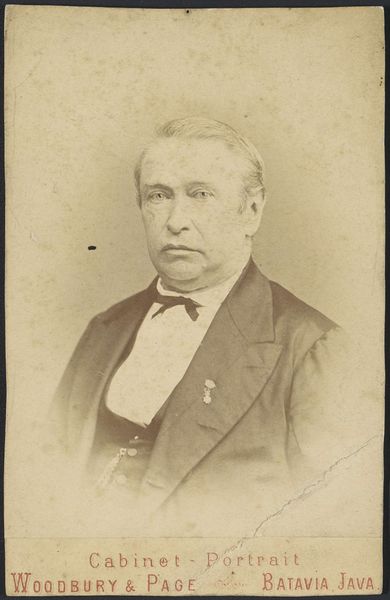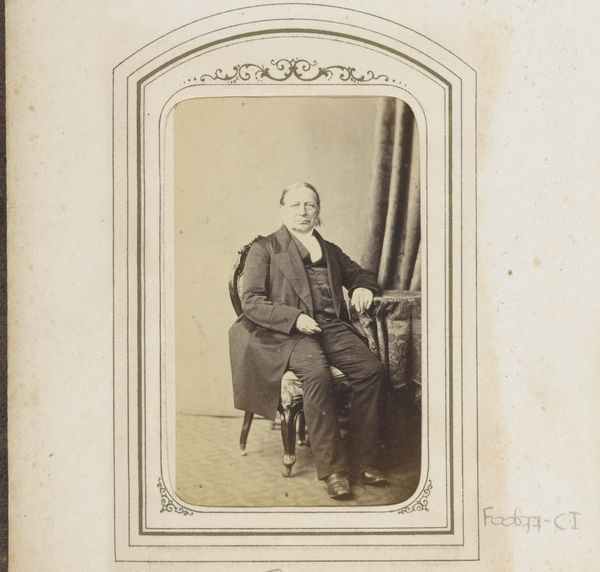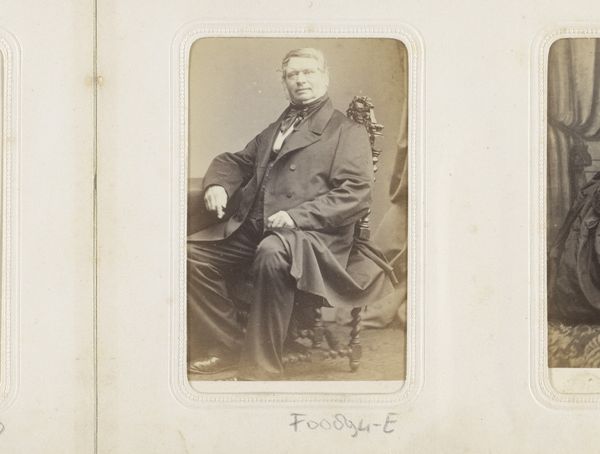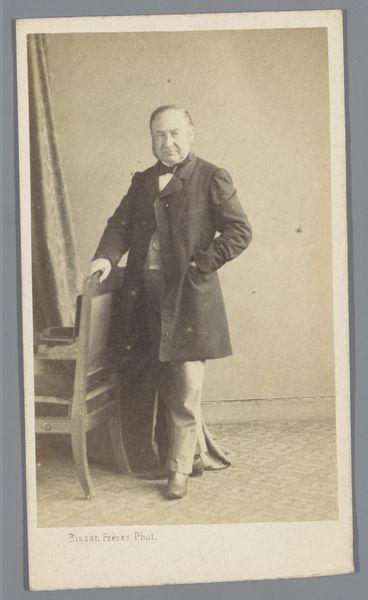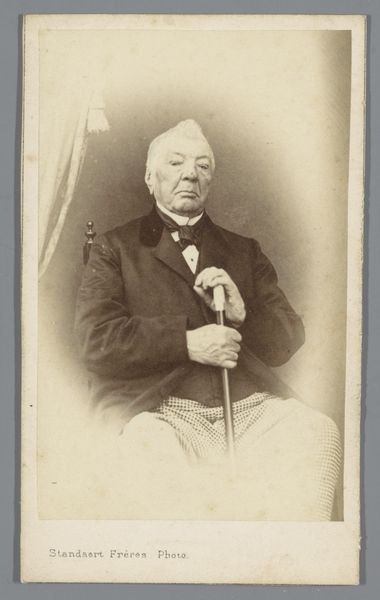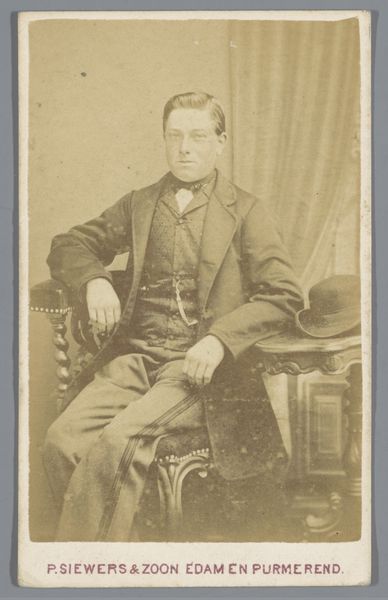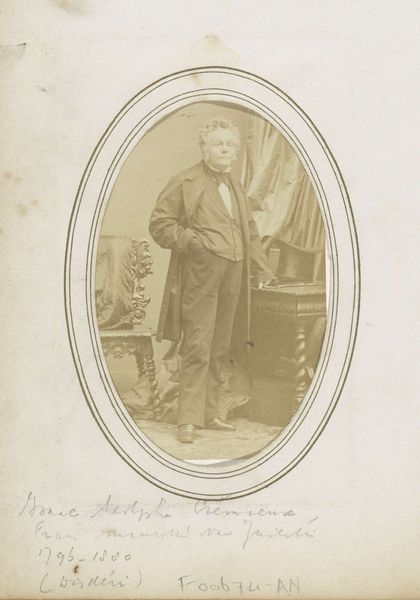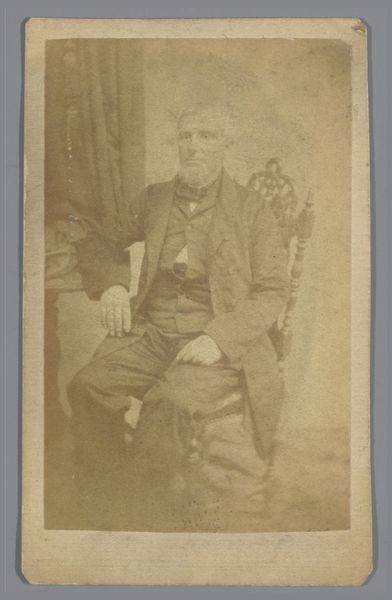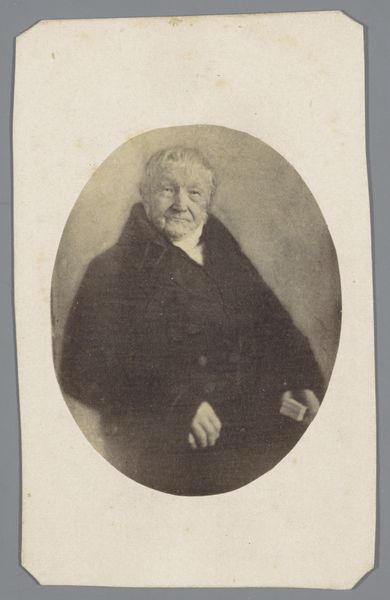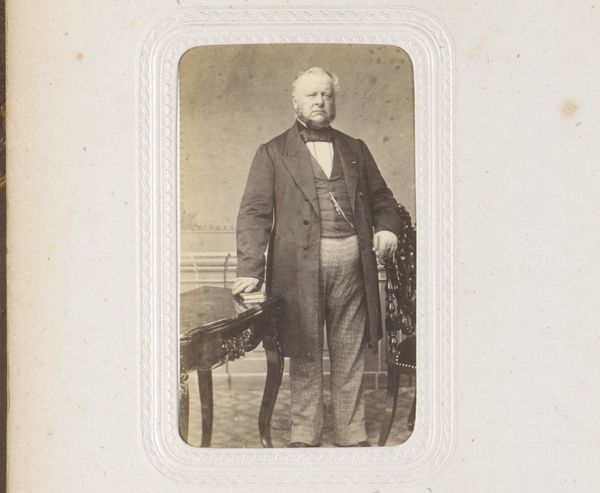
photography, gelatin-silver-print
#
portrait
#
photography
#
historical photography
#
gelatin-silver-print
#
19th century
#
realism
Dimensions: height 90 mm, width 59 mm, height 100 mm, width 62 mm
Copyright: Rijks Museum: Open Domain
Editor: Here we have "Portret van een zittende man met een jas," or "Portrait of a Seated Man with a Coat," a gelatin silver print taken sometime between 1864 and 1890, by J.A. van Krieken. It’s quite striking in its realism; you feel like you could almost reach out and touch him. How do you interpret this work within its historical context? Curator: Looking at this portrait, I am struck by the sitter’s apparent status. His formal attire speaks to a particular class, and we must consider photography’s role in shaping and perpetuating these social hierarchies. The rise of photography democratized portraiture, but it also reinforced existing power structures. Who had access to this technology, and whose stories were being told? Editor: That's an interesting point. So, beyond the surface-level depiction, you see it as a reflection of societal power dynamics? Curator: Precisely. This image captures a specific moment, yes, but it also speaks to the broader historical currents of the 19th century. Consider the concept of ‘respectability’ during this period. What societal pressures might this man have faced? What expectations were placed upon him due to his gender, class, and race – things the photograph so deliberately projects? Editor: It does make you wonder about the unspoken narratives. Was the stiff pose a way to project a certain image? Curator: Exactly. And how does the photographer, Van Krieken, participate in shaping this narrative? We need to unpack the artist’s own biases and intentions as well. What were the politics of representation at play here? How might our understanding shift if the subject were a working-class woman, for instance? Editor: I hadn't thought about it that way. I appreciate how you frame it within broader discussions of identity and power. Curator: It is a photograph of an individual, but is also so much more: a mirror reflecting the complexities and inequalities of its time. Thinking about those complexities deepens my understanding of its continued impact.
Comments
No comments
Be the first to comment and join the conversation on the ultimate creative platform.
